How to Build a Barn: A Step-by-Step Guide for Beginners
- February 13, 2024
- 2 comment
Building a barn is a monumental task that requires careful planning, a bit of construction knowledge, and the right materials. Whether you’re a seasoned builder or a determined novice, this guide will walk you through the process from selecting the perfect site to the final touches on your barn’s construction. By following these detailed steps, you’ll be on your way to constructing a functional and stylish barn that meets your needs and withstands the test of time.
Choosing a Suitable Site
1. Understand Local Building Codes
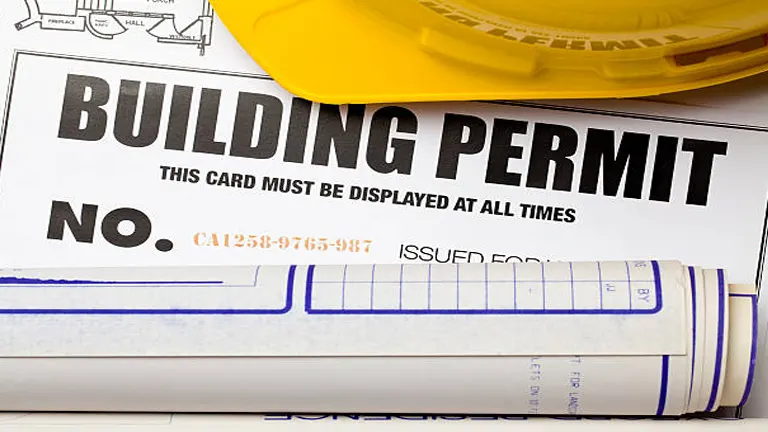
Before starting your project, it’s imperative to become familiar with the building codes specific to your area. These regulations dictate the types of structures allowed, their sizes, and the need for permits. Compliance with these rules is mandatory to ensure your barn meets legal standards and avoids potential fines or modifications down the line. Access this information by visiting your state or territory’s government website, specifically the Codes Enforcement section, to understand the prerequisites for your barn project.
2. Select the Right Location

Choosing a level site with effective drainage is paramount to prevent foundational issues. Soil type plays a significant role in this decision; sandy or gravelly soils may not provide the stability required for a durable foundation. Conversely, areas with a slight natural grade are advantageous for water runoff, reducing the risk of erosion or water damage. It’s also advisable to steer clear of flood-prone areas, such as the bottoms of hills or near water bodies, to mitigate the risk of flooding and water-related damages.
3. Consider Wind Patterns and Sunlight
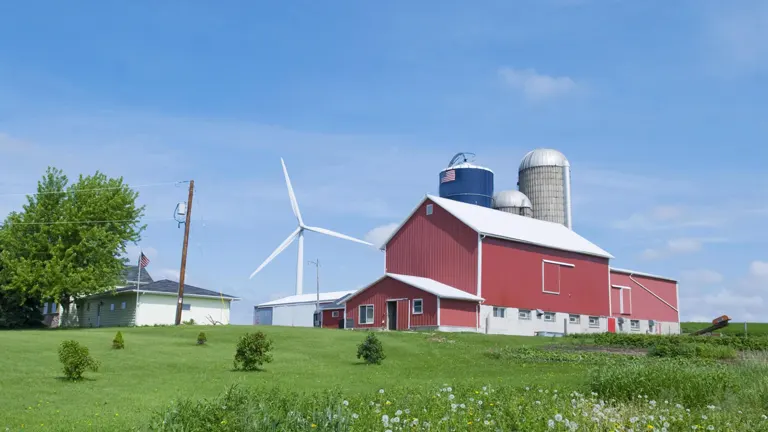
The orientation of your barn can significantly affect its internal environment. By observing wind patterns, you can position the barn to minimize the impact of livestock odors on living areas and ensure proper ventilation. This might include placing the barn downwind of your home or incorporating multiple entrances for adjustable airflow. Additionally, recognizing the path of the sun across your property allows you to optimize natural light and temperature control. Aim for a site that catches the morning sun but remains shaded during the hotter parts of the afternoon, ensuring a comfortable temperature for both animals and humans.
Laying the Foundation
1. Prepare the Site
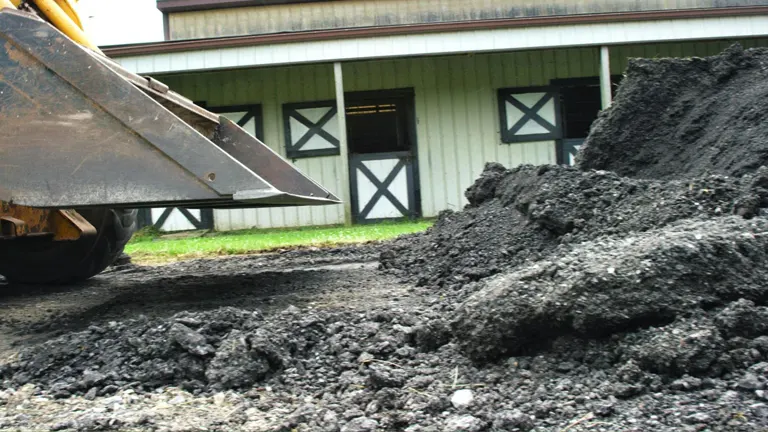
The first step is to create a level and stable ground by excavating the site to a depth of 6–8 inches. This involves removing any rocks, vegetation, and other debris that could interfere with the stability of the foundation. For sites with a slope, additional excavation may be necessary to ensure a level foundation. In some cases, building a retaining wall might be required to prevent soil erosion and provide extra stability to the foundation area.
2. Dig and Prepare the Footer

The footer serves as the primary support for the barn’s foundation, distributing the weight of the structure evenly across the ground. Dig a trench around the perimeter of the site following local building codes for depth and width to ensure compliance and structural integrity. Reinforcing the footer with rebar adds strength and durability to the foundation, helping to prevent cracks and shifts in the structure over time.
3. Backfill and Pour Concrete
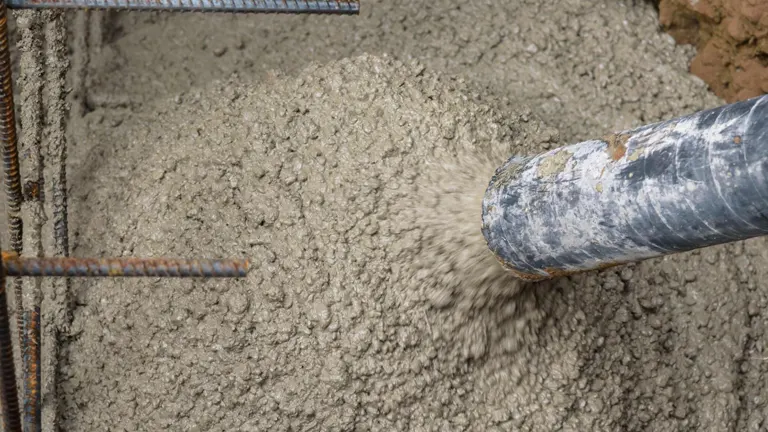
Before pouring the concrete, fill the excavated area with crushed stone. This layer aids in drainage and prevents water from pooling under the foundation, which could lead to structural issues. After backfilling, pour the concrete foundation, starting with the footer and then the slab. For barns housing animals, consider installing rubber pavers or mats over the concrete floor. These materials can significantly reduce the strain on animals’ hooves, making the barn more comfortable and safer for livestock.
Assembling the Structure
1. Frame the Walls
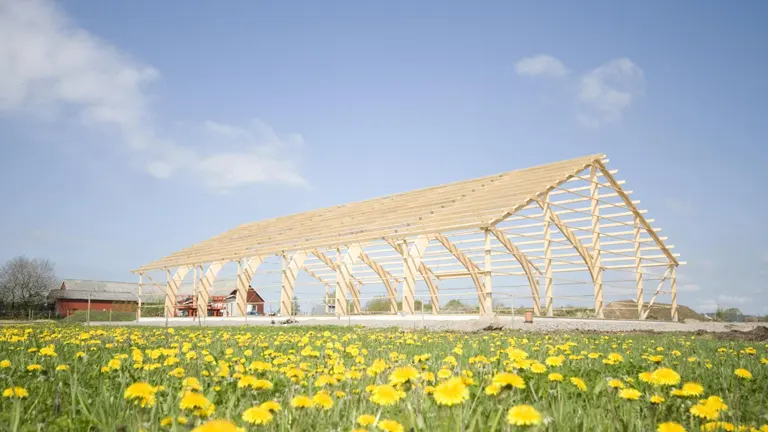
The walls of your barn are its skeletal structure, providing support for the roof and defining the barn’s interior and exterior spaces. Use 2×6 studs to frame the walls, securing them to the foundation’s sill plate to ensure a strong bond between the foundation and the structure. For a more traditional or rustic appearance, rough-cut oak posts can be used as an alternative, offering both aesthetic appeal and robust support.
2. Build the Roof Trusses
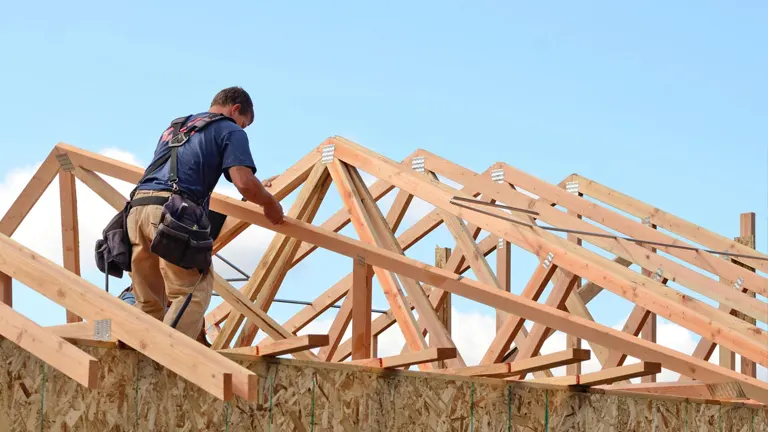
The roof is one of the most critical components of your barn, protecting the interior from the elements. Select a roof style that matches your aesthetic preferences and meets the functional needs of the barn, taking into account the local climate to ensure it can withstand local weather conditions. Once you’ve chosen a style, construct the trusses according to the dimensions of your barn’s roof. This step requires precision, as the trusses must fit together perfectly to form a stable and secure roof.
3. Install Roofing Materials
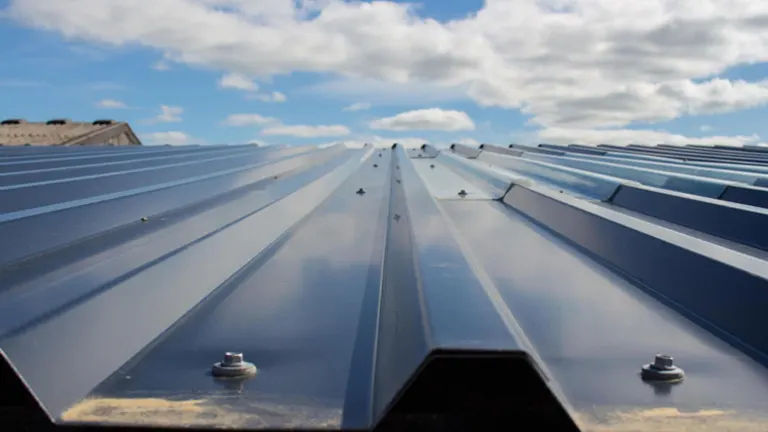
Begin by covering the roof trusses with plywood sheathing to create a solid base. Then, lay roofing felt over the plywood to provide an additional layer of protection against moisture. Finally, choose between shingles or metal sheets for the outer layer. Shingles offer a traditional look and are suitable for various architectural styles, while metal sheets provide durability and resistance to extreme weather conditions. Both options will ensure your barn’s roof is secure and long-lasting.
4. Add Siding
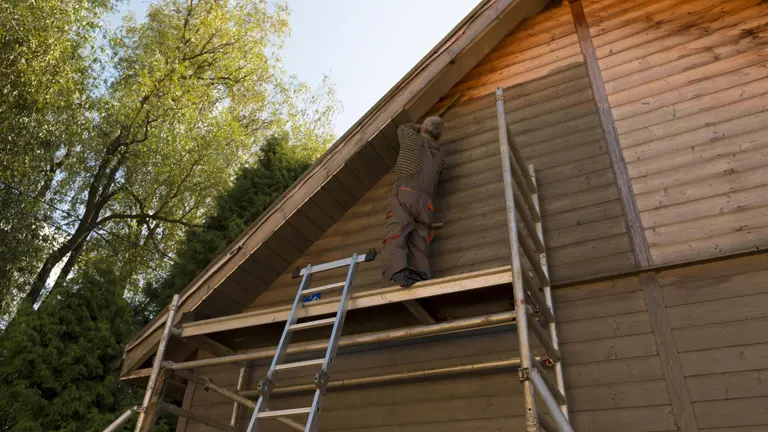
Board and batten siding is iconic for barns, offering a timeless look while protecting the structure from the elements. Install pre-cut panels of board and batten siding on the exterior walls, ensuring they are securely attached. This type of siding not only enhances the barn’s appearance but also contributes to its structural integrity by providing an additional layer of weather protection.
5. Install Doors
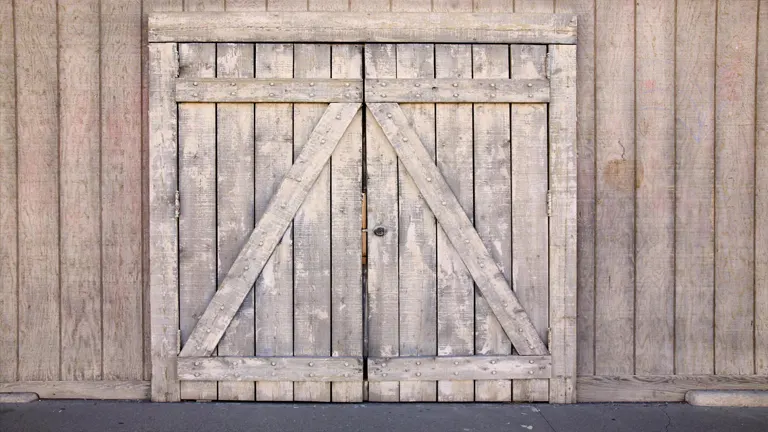
Sliding doors are a practical choice for barns, facilitating easy access while maximizing space efficiency. Measure the doorway carefully before installation to ensure the doors will fit correctly and operate smoothly. Properly installed sliding doors can significantly improve the functionality of your barn, making it easier to move animals and equipment in and out of the structure.
Final Thoughts
Building a barn is a rewarding project that enhances your property’s functionality and appeal. By carefully selecting your site, adhering to local building codes, and following these steps for foundation laying and structure assembly, you’ll create a sturdy and welcoming barn for your livestock, storage needs, or personal projects. Remember, patience and attention to detail are your best tools in making your barn-building experience successful and satisfying.
FAQs
- Can I repurpose old materials to build my barn, and what should I consider?
Yes, repurposing old materials like reclaimed wood can add character and sustainability to your barn project. Consider the structural integrity of these materials and ensure they are free of pests and rot. Consulting with a structural engineer or construction expert can help determine the suitability of reclaimed materials for your barn. - How do I choose between a traditional wooden barn and a modern metal barn?
Choosing between wooden and metal barns depends on your aesthetic preference, budget, climate, and intended use. Wooden barns offer a classic look and natural insulation but may require more maintenance. Metal barns are durable, fire-resistant, and easier to construct but can be less aesthetically pleasing and offer poor insulation in extreme temperatures. - What are the environmental considerations when building a barn?
Consider sustainable building practices such as using eco-friendly materials, maximizing natural light and ventilation, installing rainwater harvesting systems, and considering solar panels. Additionally, choosing a location that minimizes environmental impact and preserves natural habitats is crucial. - How can I make my barn energy-efficient?
Incorporate insulation, energy-efficient windows, and doors to maintain temperature control. Use solar panels for renewable energy and consider skylights or strategically placed windows for natural lighting. Select energy-efficient LED lighting and appliances for any electrical needs within the barn. - What is the best way to ensure my barn is properly ventilated?
Proper ventilation is essential for maintaining air quality and temperature control. Include high-placed windows, vents, or cupolas for passive ventilation. For larger barns or those housing animals, consider mechanical ventilation systems like exhaust fans. Ensure the barn’s design allows for cross-ventilation. - Can I build a barn if my property is on a slope?
Yes, but it requires additional preparation like leveling the site or building a retaining wall to manage erosion and runoff. Consulting with a civil engineer or architect can provide solutions tailored to your property’s specific slope challenges. - What are some innovative uses for barns beyond housing animals or storing farm equipment?
Barns can be adapted for various uses, such as event spaces, workshops, art studios, home offices, or even residential living spaces (barn homes). Each use may require specific modifications like additional insulation, electrical wiring, plumbing, and zoning considerations. - How can I make my barn animal-friendly?
Ensure adequate space for each animal, proper insulation for temperature control, and easy access to food and water. Design the interior for easy cleaning and maintenance, with durable materials that can withstand wear and tear. Consider the animals’ behavioral needs, providing areas for exercise and rest. - What are the most common mistakes to avoid when building a barn?
Underestimating the budget, not obtaining the necessary permits, inadequate planning for space and usage, poor site selection, and neglecting ventilation and insulation are common pitfalls. Avoid these by thorough planning, consulting professionals, and adhering to local building codes and regulations. - How do I maintain and preserve my barn over time?
Regular inspections for structural integrity, pest control, and addressing any damages or wear and tear promptly are key. Treat wooden components to prevent rot and pests, repaint and seal exterior surfaces as needed, and ensure gutters and drainage systems are clear to prevent water damage.
We hope this guide has illuminated the path to building your dream barn, blending practical advice with creative solutions. Now, we’d love to hear from you! Whether you’re a seasoned barn builder with wisdom to share or a curious novice with questions, your insights and inquiries enrich our community. Comment below to share your thoughts, experiences, or even the challenges you’ve faced. Let’s cultivate a space where ideas grow and inspirations flourish. Don’t forget to share this article with fellow barn enthusiasts – together, we can build more than just structures; we can build dreams.

David Murray
Forestry AuthorI'm David Murry, a forestry equipment specialist with a focus on chainsaw operation. With over 13 years of experience, I've honed my skills in operating and maintaining a wide range of machinery, from chainsaws to log splitters. My passion for the outdoors and commitment to sustainable forestry drive my work, which emphasizes safety, efficiency, and staying updated with industry advancements. Additionally, I'm dedicated to sharing my expertise and promoting environmental awareness within the forestry community.



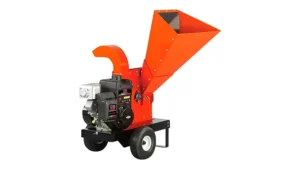









What are your thoughts on building a chicken coop attached to the barn ? Or would it be better to build the chicken coop and run away from the barn ?
Daniel Rinaldi
January 12, 2025 4:09 pmBuilding a chicken coop next to the barn can save space and make it easier to feed and care for your animals. But keeping it away from the barn helps with airflow, reduces bad smells, and lowers the chance of spreading diseases between animals. Think about your space and how you’ll use the barn to decide!
David Murray
January 13, 2025 8:45 am